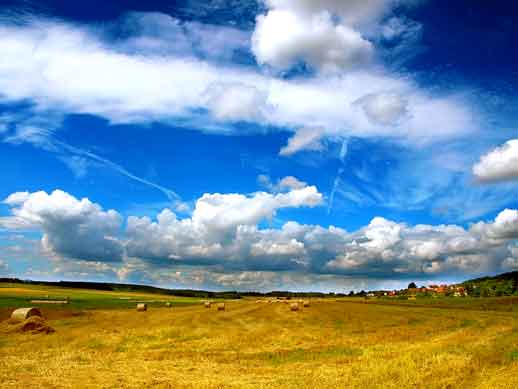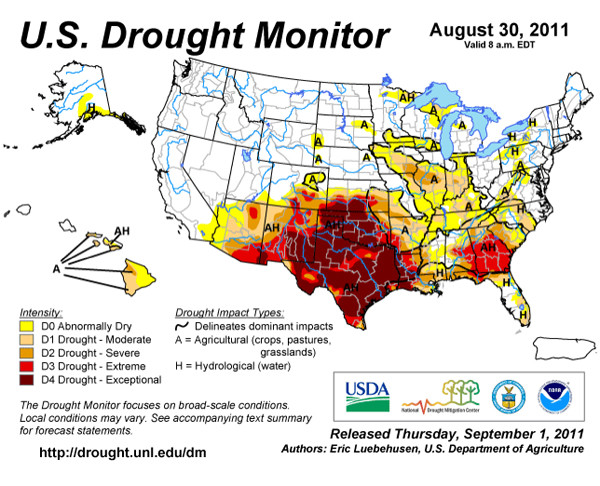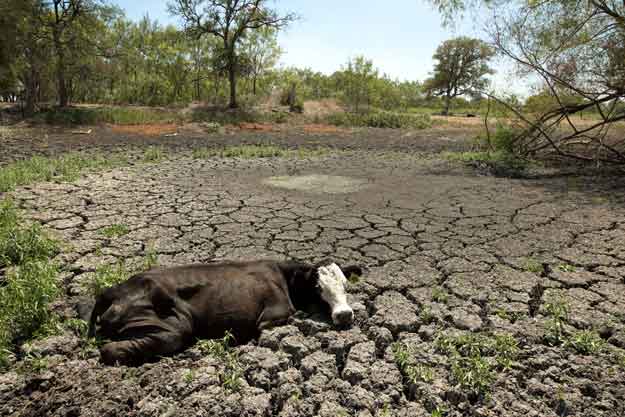The Blogging Farmer
Alex Tiller’s Blog on Agriculture and Farming
Farmland Prices Feed Tension Between Farmers and Financial Investors
‘The double-edged sword here is that taking advantage of business and financial opportunities, on the part of both farmers and investors, could lead to more financial hardship than both have already faced in tough economic times.’
Two facets of the well-being of the United States seem to be invariably linked--farming and the economy. From Kansas to Indiana, Oklahoma to Iowa, the way farming is conducted has changed drastically over the past few years as economic tensions have affected both production and the way a farming business is run. Investors who have lost out on stocks and bonds during the recession have turned to farming as an investment. Whether farmers are happy, outsiders looking to profit off the land are not going anywhere, at least for now. The fast rising prices of crops have led to increased production. Corn stands at $7 per bushel as of July 2011 and both farmers and their investor partners are rushing to have a stake in the profit.
Farmer Robert Huber bought a corn and soybean farm 10 years ago in Carmel, Indiana. Recently he sold the 500-acre farm for three times what he originally paid. Deals like this are taking place across the Midwest, and farmers are profiting, even if it means turning in the ownership of their land to someone who has never been on a farm before. However, this phenomenon, as lucrative as a deal it may seem for both parties, could have a limited lifespan. Crop prices are rising as the demand for food worldwide keeps rising, at the same time there is less and less land suitable for farming.
Based on the principles of supply and demand, as well as simple profit, farmers are planting the crops that are rising in price the fastest. If this trend continues, the prices will eventually fall, but at the same time the value of the farms planting the crops will drop too. Thus, the current momentum unravels. The double-edged sword here is that taking advantage of business and financial opportunities, on the part of both farmers and investors, could lead to more financial hardship than both have already faced in tough economic times.
Still, the pace continues to pick up. Low interest rates have persisted and investors have not earned nearly as much as they would like to from investments such as CDs and money market funds. Moving their money into corporate bonds and stocks, the more risky of financial assets, investors have found comfort in farms because they can collect income in three ways - by owning the farm, selling what is grown, and charging rent to farmers.
In Iowa, local farmers have expressed anger over the trends, but have nothing to do to change anything. Investors are hungry. A farmer in Iowa sought to buy his farm, which he rented for two decades, and dozens of his local farming neighbors actually withheld their bids in support. An insurance executive eventually bid over $1 million for the property and purchased the farm nonetheless. In fact, it has been reported that one-quarter of farm buyers in Iowa are investors, but the farmers seem to be holding on to their loyalty of their land and each other.
The tide will turn again in a few years, according to Jeffrey Obrecht of brokerage firm Farmers National, and investors will soon sell back the land as new profit ventures are discovered. Even investors themselves are wondering if money managers will see farms as tradable as stocks or bonds. For now, both farmers and investors are at the mercy of a slowly recovering economy and what appear to be avenues for profit in the short term.
(Posted September 15, 2011 at Alex Tiller’s Blog on Agriculture and Farming)Source:
MSNBC, Down on the Farm, Investors See Big PotentialFurther Reading:
“Are Rising Farmland Prices Returning us To The 1980s?”If you are going to buy additional farmland, how will it be purchased? Will it be a cash outlay from recent profits, or will it be partially debt-financed with the help of a lender? If it is the latter, given the lofty land values of recent months, what is the vulnerability to farmers, to lenders, and the lending system, should the unthinkable happen?
The agricultural economy weathered the Wall Street storm, in part because many farmers had used recent profits to retire debt, and recessionary times did not have deep roots in farm country. Higher commodity prices have kept many farming operations above water, unlike the 1980’s when debt-financed farmland went back to the lender. Writing in the current issue of Choices, an electronic magazine on agricultural economic issues, Kansas City Fed economist Brian Briggeman says current conditions may seem like the 1980’s. That is causing many to wonder if today’s land values are a bubble. He says one difference is that rising farm real estate debt today is concentrated among fewer borrowers and fewer lenders, but the lenders are in a strong financial position than they were 30 years ago.
Read the entire column at Farmgateblog.com***
Farmers Work the Land Through the Texas-Okalahoma Drought
‘Financial experts say the effects of the current drought might last for years’
The hardship that farmers face is sometimes blamed on government agricultural policy. However, the biggest problem in many areas has been from Mother Nature herself. The drought in 2011 in the plains has caused total losses for some crop farmers, particularly on the Texas and Oklahoma border. Experts at Texas A&M University say as much as $5.2 billion has been lost in agricultural revenue as the land has dried up, crops have perished, and the topsoil has dried into dust that blows in the wind. Even systems that efficiently keep crops watered have failed. Crops maintained by center pivot irrigation have died out because of the stress of the heat, despite being adequately watered; the same has occurred throughout Oklahoma and Texas as well as Kansas.
U.S. Department of Agriculture meteorologist Brad Rippey says large areas of the country will continue to experience drought through the Fall. ‘The only thing at this point that would provide some type of relief would be a tropical storm,’ Rippey says. Conditions in the Pacific indicate a 50 percent chance of sliding into a La Nina pattern, which would exacerbate the already exceptional drought. If La Nina conditions do develop this fall, the Southeast portion of the U.S. may slip back into drought conditions this fall. In contrast, the Midwest and the West would receive higher levels of rain. Video posted at YouTube by the U.S. Department of Agriculture.Despite taking precautions to reduce the stress on crops, farmer Jerod McDaniel has lost a great deal of crop yield. Land that would support up to 185 bushels an acre returned a total loss, even though McDaniel cut down the plantings and began irrigation in early spring to prepare the soil. The seeds were even planted early. Other fields fared better, although McDaniel could not work out a formula because one field that survived was planted early on, and the other one later in the season. The intense heat is thought to have played in a role in killing off the crops.
The Dust Bowl of the 1930s is still fresh in the minds of older generations. Hardships that grew out of that remain solid through oral tradition and folklore, and are thoroughly described in The Grapes of Wrath by John Steinbeck. Farmers today face uncertainty because of the rapid changes in farming conditions; Texhoma was able to pull out 6.2 million bushels of corn in 2010, but not even three million are expected in 2011. Corn producers for Texhoma Wheat Growers, Inc., for example, have fared so badly that the company has introduced options for canceling contracts, which include service fees per each bushel lost.
Oklahoma Drought: A New Generation--Too Dry To Grow—SUNUPTV’s Lyndall Stout looks at the impact of the dry, hot weather on summer crops with Garfield County producers Curtis Mack and Ed Regier. Also includes perspective from Randy Boman, director of the Southwest Research and Extension Center, and specialists Jason Warren, Chad Godsey and Joe Armstrong. Posted at YouTube by SUNUPTV.Financial experts say the effects of the current drought might last for years. On a financial level, farmers with just a percentage of their land covered may only recover input costs, according to Rowdy Slavin of First National Bank. A rippling effect could have an impact on indemnities as well. Farmers like McDaniel have fared better because he has a more diverse array crops and production areas. Some fields have received a little rain, but the 34-year-old farmer hit a roadblock when some of the lost corn crop turned up potentially toxic, so plans for grazing the land are now up in the air.
The natural environment complicates things not only for farmers, but for policy makers in Washington as well. Jerod McDaniel's stand is that crop insurance is more important than direct subsidy payments. Of course, this might not be the position of every farmer, so a complicated road ahead lies for both farmers and government policy. Brief changes in the weather have opened the door to planting wheat, but even good farmers like McDaniel face uncertainty as to how much is sufficient to bring the crop yield up enough to turn a significant profit.
(Posted September 01, 2011 at Alex Tiller’s Blog on Agriculture)Sources:
DTN Headline NewsEnvironmental Science in the 21st Century
Must-Read and -See: ‘Dry Season: The Texas Drought of 2011’
A cow is stuck in the mud at the bottom of an empty stock tank in Garfield on Wednesday July 27, 2011. The historic drought of 2011 dried up stock tanks all over Texas.
A stunning photo blog about the devastating impact of the 2011 drought in Texas. Photographs by Jay Janner, story by Brenda Bell. Read/see it at the Austin-American Statesman.
Hello, and thanks for checking out my blog. My name is Alex Tiller and I grew up in rural Ohio (Clark County) where my family still owns farmland (corn and beans). I am a member of the American Society of Farm Managers and Rural Appraisers and am also an agribusiness author/blogger. I write about commercial farming, family farms, organic food production, sustainable agriculture, the local food movement, alternative renewable energy, hydroponics, agribusiness, farm entrepreneurship, and farm economics and farm policy. I visit lots of farms in different areas of the country (sometimes the world) that grow all kinds of different crops and share what I learn with you through this blog.? You can contact me via email by clicking here: Email Alex
Founder/Publisher/Editor: David McGee
Contributing Editors: Billy Altman, Laura Fissinger, Christopher Hill, Derk Richardson
Logo Design: John Mendelsohn (www.johnmendelsohn.com)
Website Design: Kieran McGee (www.kieranmcgee.com)
Staff Photographers: Audrey Harrod (Louisville, KY; www.flickr.com/audreyharrod), Alicia Zappier (New York)
E-mail: thebluegrassspecial@gmail.com
Mailing Address: David McGee, 201 W. 85 St.—5B, New York, NY 10024






